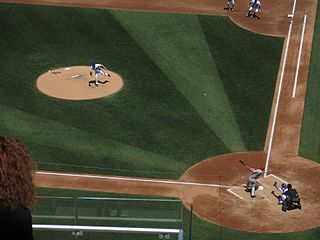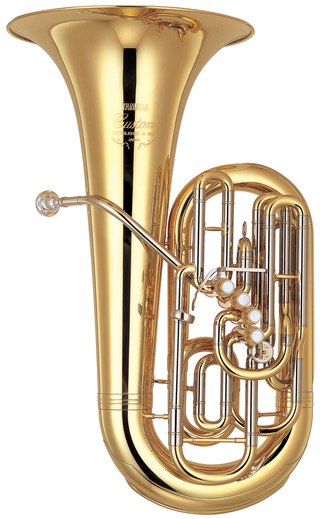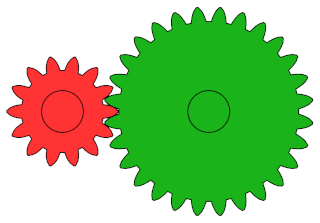
Galipot is an impure resin of turpentine. It is obtained from pine trees by evaporation of the essential oil and once purified is called yellow pitch, white pitch or Burgundy pitch.

Galipot is an impure resin of turpentine. It is obtained from pine trees by evaporation of the essential oil and once purified is called yellow pitch, white pitch or Burgundy pitch.

Baseball is a bat-and-ball sport played between two teams of nine players each, taking turns batting and fielding. The game occurs over the course of several plays, with each play generally beginning when a player on the fielding team, called the pitcher, throws a ball that a player on the batting team, called the batter, tries to hit with a bat. The objective of the offensive team is to hit the ball into the field of play, away from the other team's players, allowing its players to run the bases, having them advance counter-clockwise around four bases to score what are called "runs". The objective of the defensive team is to prevent batters from becoming runners, and to prevent runners' advance around the bases. A run is scored when a runner legally advances around the bases in order and touches home plate.
A musical note is an isolatable sound used as an atomic building block for creating music. This discretization facilitates performance, comprehension, and analysis. Notes may be visually communicated by writing them in musical notation.

A percussion instrument is a musical instrument that is sounded by being struck or scraped by a beater including attached or enclosed beaters or rattles struck, scraped or rubbed by hand or struck against another similar instrument. Excluding zoomusicological instruments and the human voice, the percussion family is believed to include the oldest musical instruments. In spite of being a very common term to designate instruments, and to relate them to their players, the percussionists, percussion is not a systematic classificatory category of instruments, as described by the scientific field of organology. It is shown below that percussion instruments may belong to the organological classes of idiophone, membranophone, aerophone and cordophone.

The trumpet is a brass instrument commonly used in classical and jazz ensembles. The trumpet group ranges from the piccolo trumpet—with the highest register in the brass family—to the bass trumpet, pitched one octave below the standard B♭ or C trumpet.

The tuba is the largest and lowest-pitched musical instrument in the brass family. As with all brass instruments, the sound is produced by lip vibration – a buzz – into a mouthpiece. It first appeared in the mid-19th century, making it one of the newer instruments in the modern orchestra and concert band, and largely replaced the ophicleide. Tuba is Latin for "trumpet".

A melody, also tune, voice or line, is a linear succession of musical tones that the listener perceives as a single entity. In its most literal sense, a melody is a combination of pitch and rhythm, while more figuratively, the term can include other musical elements such as tonal color. It is the foreground to the background accompaniment. A line or part need not be a foreground melody.
Absolute pitch (AP), often called perfect pitch, is the ability to identify or re-create a given musical note without the benefit of a reference tone. AP may be demonstrated using linguistic labelling, associating mental imagery with the note, or sensorimotor responses. For example, an AP possessor can accurately reproduce a heard tone on a musical instrument without "hunting" for the correct pitch.

Pitch is a perceptual property of sounds that allows their ordering on a frequency-related scale, or more commonly, pitch is the quality that makes it possible to judge sounds as "higher" and "lower" in the sense associated with musical melodies. Pitch is a major auditory attribute of musical tones, along with duration, loudness, and timbre.

Softball is a game similar to baseball played with a larger ball on a smaller field, with only underhand pitches permitted. Softball is played competitively at club levels, the college level, and the professional level. The game was first created in 1887 in Chicago by George Hancock.

A gear is a rotating circular machine part having cut teeth or, in the case of a cogwheel or gearwheel, inserted teeth, which mesh with another (compatible) toothed part to transmit (convert) torque and speed. The basic principle behind the operation of gears is analogous to the basic principle of levers. A gear may also be known informally as a cog. Geared devices can change the speed, torque, and direction of a power source. Gears of different sizes produce a change in torque, creating a mechanical advantage, through their gear ratio, and thus may be considered a simple machine. The rotational speeds, and the torques, of two meshing gears differ in proportion to their diameters. The teeth on the two meshing gears all have the same shape.

Sanford Koufax, nicknamed "the Left Arm of God" and "Dandy Sandy", is an American former baseball pitcher who played 12 seasons in Major League Baseball for the Brooklyn/Los Angeles Dodgers from 1955 to 1966. Widely regarded as one of the greatest pitchers in baseball history, Koufax was the first three-time winner of the Cy Young Award, each time winning unanimously and the only pitcher to do so when a single award was given for both the leagues, and was also named the National League Most Valuable Player in 1963. Retiring at the age of 30 due to arthritis in his pitching elbow, Koufax was elected to the Baseball Hall of Fame in his first year of eligibility in 1972 at the age of 36, the youngest player ever elected.

In baseball, the statistic innings pitched (IP) is the number of innings a pitcher has completed, measured by the number of batters and baserunners that have been put out while the pitcher is on the pitching mound in a game. Three outs made is equal to one inning pitched. One out counts as one-third of an inning, and two outs as two-thirds of an inning. Sometimes, the statistic is written 34.1, 72.2, or 91.0, for example, to represent 34+1⁄3 innings, 72+2⁄3 innings, and 91 innings exactly, respectively.

In baseball, the pitcher is the player who throws ("pitches") the baseball from the pitcher's mound toward the catcher to begin each play, with the goal of retiring a batter, who attempts to either make contact with the pitched ball or draw a walk. In the numbering system used to record defensive plays, the pitcher is assigned the number 1. The pitcher is often considered the most important player on the defensive side of the game, and as such is situated at the right end of the defensive spectrum. There are many different types of pitchers, such as the starting pitcher, relief pitcher, middle reliever, lefty specialist, setup man, and the closer.
In the game of cricket, the cricket pitch consists of the central strip of the cricket field between the wickets. It is 22 yd (20.12 m) long and 10 ft (3.05 m) wide. The surface is flat and is normally covered with extremely short grass, but can be completely dry or dusty soil with barely any grass or, in some circumstances, made from an artificial material. Over the course of a cricket match, the pitch is not repaired or altered other than in special circumstances - meaning that it will change condition. Any grass on the pitch in the game's first over, for example, may have disappeared by twentieth over due to wear.

This is a general glossary of the terminology used in the sport of cricket. Where words in a sentence are also defined elsewhere in this article, they appear in italics. Certain aspects of cricket terminology are explained in more detail in cricket statistics and the naming of fielding positions is explained at fielding (cricket).

In baseball, a starting pitcher or starter is the first pitcher in the game for each team. A pitcher is credited with a game started if they throw the first pitch to the opponent's first batter of a game. Starting pitchers are expected to pitch for a significant portion of the game, although their ability to do this depends on many factors, including effectiveness, stamina, health, and strategy.

Spin bowling is a bowling technique in cricket, in which the ball is delivered relatively slowly but with the potential to deviate sharply after bouncing. The bowler is referred to as a spinner.

A football pitch is the playing surface for the game of association football. Its dimensions and markings are defined by Law 1 of the Laws of the Game, "The Field of Play". The pitch is typically made of natural turf or artificial turf, although amateur and recreational teams often play on dirt fields. Artificial surfaces are allowed only to be green in colour.

Pitch Perfect is a 2012 American musical comedy film directed by Jason Moore and written by Kay Cannon. It features an ensemble cast, including Anna Kendrick, Skylar Astin, Rebel Wilson, Adam DeVine, Anna Camp, Brittany Snow, Hana Mae Lee, Alexis Knapp, Ester Dean, Kelley Jakle, Shelley Regner, Wanetah Walmsley, Ben Platt, Utkarsh Ambudkar, John Michael Higgins, and Elizabeth Banks. The film's plot follows an all-girl a cappella group who compete against another group from their own college to win the Nationals. The film is loosely adapted from Cornell University alum Mickey Rapkin's non-fiction book, titled Pitch Perfect: The Quest for Collegiate a Cappella Glory and director Moore's own experiences at his alma mater, Northwestern University. Filming concluded in December 2011, in Baton Rouge, Louisiana.

Shohei Ohtani, nicknamed "Shotime", is a Japanese professional baseball pitcher and designated hitter for the Los Angeles Dodgers of Major League Baseball (MLB). He has previously played in MLB for the Los Angeles Angels and for the Hokkaido Nippon-Ham Fighters of Nippon Professional Baseball's (NPB). Because of his elite contributions both offensively and as a pitcher, a rarity for two-way players, Ohtani's peak is widely considered among the greatest in baseball history, with some comparing it favorably to the early career of Babe Ruth.